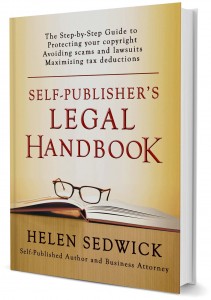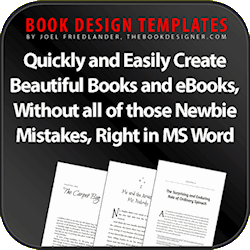
The audio book market is growing faster than any other format. People are listening to books while they drive, exercise, or simply relax. Listeners don’t have to stop when they switch devices, since Kindle’s Whispersync enables them to move between audio and ebooks without losing their place.
Every indie author should consider jumping into this market.
What Audio Books Sell Best?
Fiction captures 77% of the market, and adult titles outsell children’s titles by almost 9 to 1.
Most listeners (63%) buy audio books based on the genre of the book. Mysteries, thrillers and suspense are the most popular followed by historical, biography, memoir and general pop fiction. Most listeners prefer non-abridged versions.
How Can Authors Produce Their Own Audio Books?
By far, the most popular digital platform for producing and distributing audio books is Amazon’s ACX (Audio Book Creation Exchange).
ACX serves two functions. First, it is a matchmaker for authors and narrators (which ACX calls producers). Second, it uses Audible to distribute the audio books through Amazon and iTunes, the two biggest retailers of audio books.
 The ACX matchmaking process works well. Authors post their books on ACX and producers upload auditions. The author chooses a producer from the auditions, and the author and producer work together to create a final version of the audio book and upload it.
The ACX matchmaking process works well. Authors post their books on ACX and producers upload auditions. The author chooses a producer from the auditions, and the author and producer work together to create a final version of the audio book and upload it.
Alternatively, authors can narrate their own books and upload them into the ACX system.
In either case, Audible distributes the audio book through Amazon and iTunes. And Audible has the right to distribute the audio book for seven years.
In working with ACX, the author must make two decisions,
- First, the author must decide whether (i) to pay the producer an upfront fee for the work (typically between $100 and $1000 per finished hour) but no royalty on sales, or (ii) to split the author’s share of audio book royalties 50/50 with the producer and pay no upfront fee.
- Second, the author must decide whether to sell the audio book through Audible on an exclusive or non-exclusive basis.
If the author grants exclusive rights, then the author receives 40% of the retail sales. However, the author agrees not to distribute the audio book through any other channels, including the author’s own website. An exclusive agreement with ACX does not affect the author’s right to sell the print and ebook versions of the same work.
If the author grants non-exclusive rights, then the royalty rate is 25%. In addition, the author does not have the option to split royalties with the producer and must pay the producer a flat fee. The author retains the right to distribute the audio book through other channels and in other audio formats. Some other distribution options are described below, and others are sure to pop up over time.
Keep in mind that Audible has close to a monopoly on the market. Most likely, the bulk of your audio book sales will be through Audible, so authors may be better off with the exclusive option.
Before you sign up with ACX, there are some drawbacks you should consider.
First, Audible controls pricing. Under KDP and CreateSpace, authors set their own suggested retail price (SRP) and earn royalties based on that SRP. Audible, however, sets the price for the audio books, and royalties are based on actual sales. Audible discounts audio books substantially and offers low subscription pricing. For indie author accustomed to controlling their pricing, this is hard to accept.
Second, the royalty-splitting option may not get you the best producers. Many of the better producers won’t participate in a royalty-sharing agreement unless the book is a top seller. They prefer to be paid a flat rate, typically thousands of dollars. This upfront payment may not be feasible for most authors.
Other Audio Options
Podium Publishing is an interesting option. Podium produces and publishes high-quality audio books and boasts an impressive portfolio (include indie author Andy Weir, author of The Martian). They focus on sci-fi and fantasy.
While the Podium contact page says they love to hear from authors, agents, publishers and listeners, they do not accept submissions. “We reach out to authors that are a good fit for us, rather than accept author submissions.” But if you have a book that is selling well, it’s worth an email to let them know you are interested.
Various companies offer to produce audio books for you. An online search of “audio book producers” will generate dozens of choices. They hire the narrators (with the author’s input and approval), produce and edit the audio book. Some work on a flat fee basis, other on a royalty-sharing basis, and many will negotiate a blended deal.
If you work with any of these companies, make sure you end up with all rights to the finished audio book and you also understand how to terminate the relationship in case the arrangement does not work out.
Some self-publishing service companies also produce audio books. Frankly, that doesn’t appeal to me. They are not experts at producing audio books, so they probably send the project out to other providers. The author ends up with more people with their fingers in the royalties cookie jar.
Once you have a completed audio book in hand, and assuming you have decided not to give ACX an exclusive distribution deal, then there are various distribution sites to help get your book into listeners’ hands.
Author’s Republic is one. This audio book distribution portal can get an author’s work on every major audio book platform through just one submission, including Audible/iTunes/Amazon, Audiobooks.com, Barnes & Noble, Scribd, Downpour, OverDrive, and Hoopla. Authors control the price of their audio books and receive a royalty of between 25 and 35% of the retail price, depending on the sales channel.
Finally, authors should also consider selling their audio books as downloads from their own websites. Selling the audio books themselves, authors enjoy the highest royalty rate – 100%!
What is your experience selling audio books?

This photo of my father and his brother Bob (circa 1932) is probably an orphan work.
Last week, I had lunch with a writer who is deep into revising her memoir. She showed me a stack of photos from her years in summer stock theater and Off-Off-Broadway plays. She told me how important they were to her book. Unfortunately, I put my lawyer hat on, and I asked her if she had permission to use the photos. Most likely a photographer or theater company or someone owns the copyright in those photos. Her jaw dropped. “How am I ever going to figure that out?”
Very good question.
When the ownership of a copyrighted work is unknown, or the owner cannot be found, we have what is called an orphan work. Memoir and non-fiction writers run into this problem all the time.
Orphan works include everything from World War II photographs to anonymous internet postings. Tens of millions of orphan works are hidden in libraries, museums, historical societies, not to mention attics. Many, such as films by long-defunct production companies, are disintegrating because no one has an economic incentive to preserve materials that cannot be displayed without risking copyright infringement. In fact, some experts estimate that 90% of all copyrighted work is orphan work.

My father and Bob on their horse Sparkplug. Another orphan work
The problem is getting worse. Many copyright laws no longer require registration and notices, making rights holders harder to find. Repeated extensions of the copyright term gave rights to creators who were already long gone. To make matters worse, the mass digitization of library and museum collections have made millions of orphan works discoverable by anyone with an internet connection.
Does a writer risk and publish the materials without permission or must this valuable, informative “orphan work” remain tucked away and inaccessible to the public?
Before we answer that question, remember that any photograph, writing or other work in the public domain is not an orphan work because it is no longer protected by copyright. For more details take a look at Cornell University’s Copyright Expiration Chart. Public domain works include:
- Any work first published before 1923
- Any unpublished work created before 1895.
- Any unpublished work created by someone who died before 1945.
Check out the Chart for more scenarios.
US Copyright Office Proposes a Solution
For years, U.S. and foreign legislatures have tried to find solutions to the copyright issues of orphan works and mass digitization. The challenge is balancing the interests of copyright owners in protecting their rights with the interest of the public in having access to its creative, historical and cultural heritage. On June 4, 2015, the U.S. Copyright Office weighed in.
The long-awaited Report of Orphan Works and Mass Digitization is an exhaustive, 234-page survey of history, opinions, and approaches and an interesting read for anyone who wants to know how Hungary, Canada, and the UK are dealing with these issues. At its core, it recommends amending the US Copyright Act, a law in sore need of updating on many fronts.
The Report lays out the general framework for amending the Copyright Act to limit the liability of users who can demonstrate that they engaged in good faith and diligent searches for the copyright owners. The key points are:
- It would apply to all categories of copyrighted orphan works (text, images, recordings), whether published or unpublished, new or old (but not in the public domain).
- The limitation on liability would be available to all users and uses, whether commercial or non-commercial, other than fixations of visual works on commercial, useful items, such as mugs and t-shirts.
- Users must be able to prove to a court by a preponderance of the evidence that they performed a good faith, diligent search to identify and locate the owner of the work BEFORE they used it. The Copyright office would publish Recommended Research Practices from time to time to provide guidance on what is to be considered an adequate search.
- Users must file a Notice of Use with the Copyright Office. Notices would create a searchable database for copyright holders to police their work.
- Users must provide attribution to the legal owner. if known.
- Users must include an “orphan works” symbol with any public distribution, display or performance.
- If the rights holder steps forward, the user would be obligated to pay the rights holder “reasonable compensation,” namely the amount a license would have reasonably cost. In theory, the cost of a license is expected to be much less than monetary damages in an infringement case.
- Certain users, such as museums, libraries, and public broadcasters would not be liable for monetary damages provided they cease infringing uses upon demand by the copyright holder.
Response to the proposal has been mixed. The Association of Research Libraries calls it burdensome and unworkable, particularly for dealing with mass digitization. Others say the proposed legislation does not provide enough legal certainty. As any lawyer will tell you, legal certainty is unattainable and frankly inappropriate where the law is trying to balance legitimate but opposing interests.
My thoughts are more favorable. The proposed orphan works legislation could provide a workable approach for independent authors, publishers, bloggers, and film makers wanting to use long-forgotten works. It would permit the use of millions of unique and insightful creations for the benefit and enjoyment of everyone.
A win-win in my view.
What You Can Do
If you want to weigh in, there will be plenty of opportunities. Considering the controversy, I expect more court cases, public hearings, reports, and requests for public comments. If you want to be heard, watch the process of the legislation for future opportunities to participate or join one of the active organizations.
In the meantime, if you have an image or other work and you cannot figure out who owns the copyright, conduct a diligent search and keep records of that search. If you still can’t figure out ownership, then you have to decide whether to take a chance that someone will step forward and claim ownership.
And consider whether the image or work is in the public domain. Public domain works include:
- Any work first published before 1923
- Any unpublished work created before 1895.
- Any unpublished work created by someone who died before 1945.
In the case of my friend, she’s taking a closer look at the photos to decide which are worth the risk and which are not. A good exercise for every writer in this situation.
 Content theft is big business, whether it’s illegally downloading movies or reposting blog posts without attribution. Every month Google receives more than 30 million requests to remove search results that link to allegedly infringing material. Thirty million a month!
Content theft is big business, whether it’s illegally downloading movies or reposting blog posts without attribution. Every month Google receives more than 30 million requests to remove search results that link to allegedly infringing material. Thirty million a month!
Sooner or later, every blogger and writer will find her work reposted or republished without permission. Or she may find websites offering free PDFs downloads of her books.
The good news is writers have various options for dealing with content theft, and 99% of the time, they will not need an attorney. A little research and a few emails may do the trick.
Dealing with Online Piracy
- Contact the Site Directly.
In most cases, if you email the infringing site and demand they remove your material, the site will comply. You may even get an apology. Believe it or not, some people still think everything on the internet is free to use.
- Send a Takedown Notice.
If an email request does not work, or you are dealing with a site that is offering free downloads, the next step is to send a “takedown notice” under the Digital Millennium Copyright Act (DMCA). All writers should learn how to send takedown notices. Like locking your car or home, it’s easy and sensible.
Social media sites like YouTube, Tumblr, Pinterest, and Facebook have online forms for reporting infringement and sending takedown notices. Typically, you’ll find them under links titled Legal, Copyright, Report a Problem, or Help. Here are the links for Facebook and Pinterest.
If you are dealing with an infringing website, then you send the takedown notice to the ISP hosting the infringing site. Go to http://www.whoishostingthis.com/ or http://whois.net/ and type in the domain. Many ISPs have online forms for sending takedown notices.
Penny Sansevieri recently wrote an excellent post about sending a takedown when her work was stolen. What to do When Someone Steals Your Stuff. Also look at the comments for great information.
Plagiarism Today has downloadable forms for a cease-and-desist letter and a DMCA takedown notice. Its related company Copybyte offers a reasonably priced service that will send notices for you.
- Notify Search Engines.
Next, contact Google Copyright Infringement Reporting Tool and request that the infringing site be removed from their search results.
- Contact Advertisers (optional).
Jennifer Mattern, a top blogger on freelance issues, suggests you contact the site’s advertisers as well. I would not do so unless you are 100% certain the site is actually infringing your work (See Take A Deep Breath below).
Once the social media site, ISP, or Goggle receives a takedown notice, it contacts the alleged infringer. If the infringer does nothing, then the infringing material is taken down. End of story.
- If that does not work…
If the infringer disputes your claim, they may file a Counter Notification. If that happens, the online service will repost the infringing material unless you notify them within 14 business days that you have filed a legal action against the alleged infringer. Also, if the ISP is not based in the United States, it may simply ignore the takedown notice. In either of these cases, skip to When to Hire an Attorney.
Dealing with Piracy in Books and Ebooks
Stolen content in print and ebooks is particular upsetting. Amazon has an on-going problem with books and ebooks intended to trick buyers into purchasing the wrong product. According to Fortune Magazine, both Thirty-Five Shades of Grey and I am the Girl with the Dragon Tattoo sold thousands of copies before they were removed from Amazon’s site. Here are some options for ebook authors.
- Set Up Goggle Alerts.
I asked Mark Coker, founder of Smashwords, for his advice. He suggested that “writers set up Google Alerts for their book titles and for unique text strings that appear in the first 10% and last 10% of the book. For example, if a book has a sentence such as James picked up the salamander and gazed at its iridescent eyes… that sentence will probably never ever appear in any other author’s book, so create a Google Alert on it. Writers could create an additional Google Alert leaving the character name out of the string in case someone simply tries to change character names and republish the book as their own.”
- Contact Amazon, Smashwords and other retailers.
If you find an infringing book, then both Amazon and Smashwords will work with you to remove infringing materials or confusing knock-offs. Amazon’s copyright claims procedures can be found at Notice and Procedure for Making Claims of Copyright Infringement. For Smashwords, contact them through their website. I suspect every distributor has a similar process to assist authors.
- Register your copyright.
If you have not already done so, register the copyright in the work being infringed immediately. You cannot file a lawsuit unless the work is registered with the US Copyright Office. If you threaten to sue, and the infringer searches copyright records and doesn’t find your registration, they may call your bluff. For more on how to register your copyright, see Joel’s post How to Copyright Your Book
When to hire an attorney
If the infringement continues despite your efforts, then consider hiring an attorney. A cease-and-desist letter on lawyer letterhead may be taken more seriously. Attorney Kathryn Goldman wrote a helpful two-piece article on Molly Greene’s blog on what to do if your ebook is pirated.
However, I would not hire an attorney or jump into litigation without asking yourself whether it will be worth the effort. Sure, if you sue and win, you may be entitled to collect damages, but your damages (lost sales) may be small and difficult to prove. The infringer may be overseas and unreachable. And litigation consumes money like wildfire, not to mentioned time, attention, and sleep.
Take a deep breath
Before you accuse someone of infringement, keep in mind:
- Titles are not copyrightable. If someone uses a title similar to yours, you cannot claim infringement. Sorry.
- Ideas, themes, facts, and historical events are not protected by copyright. If someone publishes work covering topics similar to yours, that is not automatically infringement. Infringement implies close copying how you expressed ideas and information, not the ideas and information themselves.
- If someone is quoting your work for commentary, education, or review purposes, or creating a parody of your work, that is fair use and NOT infringement, no matter how scathing. Fair use is protected by the First Amendment, which trumps copyright law.
- Those sites offering cheap or free PDFs are typically scams downloading malware or stealing credit card numbers. Anyone who clicks through on those sites was unlikely to buy your book anyway.
- Don’t get caught up in a game of whack-a-mole. While it’s upsetting to see your work stolen, the theft may have little economic consequence to you. You could waste a lot of time chasing these low-lifes. As soon as you deal with one, others may pop up. Your energy may be better spent creating new work and finding new readers.
Have you experienced piracy? Have any other techniques worked for you?
This post originally appeared on Joel Friedlander’s TheBookDesigner.com.
 If you are putting blog content on the internet, then at some point you will have to decide whether to lock up your content and give it away.
If you are putting blog content on the internet, then at some point you will have to decide whether to lock up your content and give it away.
Some bloggers protect all their work. They post a copyright notice on every page and register the copyright of their web content with the U.S. Copyright Office. They send DMCA takedown notices whenever they find their content reused without permission.
Other bloggers donate their work to the public domain by marking it with a Creative Commons public domain symbol.
And there are various options in between. For most people, the level of protection is related to the purpose of the blog. If you are marketing your expertise or products, then you might lean heavily toward protection. If your goal is to spread the word about your work or a worthy cause, you may welcome content sharing by anyone and everyone.
Regardless of your preference, let’s take a look at how to execute different levels of protection.
Most Protection
If you want to discourage any reposting of your work without permission, take the following measures:
- Put a Copyright Notice on each web page. The form is Copyright or © + Date + Name of the Copyright Owner. ALL RIGHTS RESERVED. For the date, note each year in which you posted new content. If you have been posting new content for the last five years, you would put Copyright 2010-2015 + your name.
- Adopt a Copyright Policy. Spell out the rules for people who want to quote your blog. A typical policy says something like you may copy up to 50 words without permission provided you give me attribution, link back to the original content, and do not change the overall meaning or message of my content. Put a link to your policy at the bottom of each page. Label the link Terms of Use or Permissions.
- Link back to your own blog. Put links in your posts that direct people to other blog posts or other pages on your website. Your analytics software should notify you of “ping backs” and alert you who is displaying the link.
- Register the copyright in your content. Many people don’t realize that you can register the copyright on your blog and website material. There are a few tricks to registering blog content. I cover the process in this post, How to Register Your Blog with the US Copyright Office.
- Set up Google Alerts not just for your name, but for your headlines and perhaps a string of unique words in your posts. If you find unauthorized uses of your work, notify the offending website and demand that they remove the material. If that does not work, consider sending a DMCA takedown notice. For more on takedown notices, go here: Step-by-Step Guide to Dealing with Content Theft.
- Investigate technology tools. Various tools help bloggers disable right-clicks, watermark their work, or imbed devices for alerting them of repostings. The technology is beyond me, and anything I write would probably be obsolete in a week, so check with your tech person about options.
Less Protection
If you want your posts to be shared widely, with some limits such as no commercial use, take the following measures:
- Mark your work with a Creative Commons license. Creative Commons is a non-profit organization that has developed a set of off-the-shelf licenses for use by copyright holders who wish to make their work widely available for limited or unlimited purposes. There are various Creative Commons licenses, each with its own icon, set of rights, and limitations. Some permit commercial use; others do not. The Creative Commons site has an online tool to help you determine the correct license and icon to use.
- Put a Copyright Notice on each page. The form is Copyright or © + Date + Name of the Copyright Owner. Add the phrase SOME RIGHTS RESERVED to alert people to review the limitations of your Creative Commons license before they reuse your material.
- Adopt a Copyright Policy. Even though you are more liberal about uses, you should explain what is and is not permitted with your content. For instance, you still want attribution and a link back to the original.
- Consider Registering Your Copyright. Although your work may be available under a Creative Commons license, you still own the copyright in the work and may register it. Registration is not necessary. You will own the copyright whether or not you register it. You must register before you sue someone for infringement, but if you think it’s highly unlikely you would ever sue someone for reusing your blog content, you could skip registration.
- Send DMCA takedown notices. You can still send takedown notices if someone is not complying with the applicable Creative Commons license. For instance, if you post an image and mark it with a Creative Commons non-commercial license, but find someone using the image in an internet advertisement, you should send a takedown notice.
 Giving it all away
Giving it all away
If you want your work to be shared widely, then say so in your blog. You can mark the work with the Creative Commons symbol for work donated to the public domain.
Some people are quite passionate about making content available for wide use. They argue that blog posts are contributions to the world. Inevitably, your work will be copied and pasted, so just accept it.
That position is too extreme for me. Bloggers work hard on their content. We deserve recognition and compensation, particularly when someone uses our material for commercial uses.
What do you think?
 Today’s writers wear many hats. We are Tweeters, Pinteresters, YouTube-ists and most of all, bloggers. Maybe we have heard about privacy policies and COPPA, but we don’t know whether they apply to us. After all, we are not challenging Wall Street, City Hall, or Big Data. We are blogging to inform readers about our work and sell a few books. We don’t expect our little blogs to turn into big lawsuits.
Today’s writers wear many hats. We are Tweeters, Pinteresters, YouTube-ists and most of all, bloggers. Maybe we have heard about privacy policies and COPPA, but we don’t know whether they apply to us. After all, we are not challenging Wall Street, City Hall, or Big Data. We are blogging to inform readers about our work and sell a few books. We don’t expect our little blogs to turn into big lawsuits.
Unfortunately, by blogging, writers are exposing themselves to new legal risks, primarily infringement, defamation, and invasion of privacy. They must also comply with regulatory rules that carry costly penalties. With a little information and common sense, bloggers can reduce these risks to livable levels.
Today, let’s take a quick look at these issues.
Avoiding Infringement
Downloading a great quote or image from the internet is easy. In fact, it is so easy many people forget that those words and images belong to someone else and may be protected by copyright. Some people still think anything posted on the internet is free to use.
Not true.
Text and images are intellectual property. If you use someone’s property without permission, whether it’s a car, a bicycle, or a photograph, it’s called stealing.
 What about fair use? Doesn’t that cover blogging?
What about fair use? Doesn’t that cover blogging?
Maybe. If a blog is non-commercial or educational, then some uses might be permitted as fair use. For example, if a blogger uses an image of a kitten to comment on the composition of that image; that is probably fair use. But it is not fair use for the blogger to use that same photo as an eye-catching hook in a post reminiscing about a childhood pet.
Fair use is a legal defense, not a permission slip. It excuses infringement only in special cases. Social media attorney Ruth Carter explains more in her video.
Bloggers need not risk infringement. Hundreds of sites offer free public domain images or low-cost stock images. Nina Amir lists some great sources on her post Use Photos to Enhance the Visual Appeal and Shares of Your Posts.
I list more on my site: Little Known Sources of Public Domain Images and Stock Images; a Little Money Goes a Long Way.
If you want to use an image or quote that is not in the public domain or a stock image, take the time to contact the blogger or site that posted the material. Many are happy to permit you to reuse their material if you provide attribution and a link back to their site. If not, then you know not to use their work.
 Using Images with Recognizable Faces
Using Images with Recognizable Faces
The rules on when and how bloggers may use photographs of recognizable people are complicated. Much depends on where the photograph was taken and how it is being used.
Generally, if a blogger takes a photo in a public setting and uses it to report on the event or to discuss an issue of public interest, the blogger does not need permission from people appearing in the image. For instance, you may post photos of writers you met at a conference without permission, although it never hurts to ask.
However, you should obtain permission to use any image taken in a private setting, such as a dinner party in someone’s home. The extreme case is a jilted lover posting images of his (yes, it’s almost always his) former partner without permission, commonly called Revenge Porn. Some states and countries have made this a crime.
Even if the people in your photos are fully clothed, it’s better to ask permission to use images from private settings.
Regardless of where an image was taken, never use anyone’s likeness, name, or identifying information for advertising or promotional purposes without a written release. This includes those who have passed away since in some states the right to publicity survives a person’s death by up to 100 years, whether or not the person was famous.
Finally, don’t use an image to make it appear someone is endorsing you and your work unless it’s true. Recently, an attorney had her license suspended for pasting herself into dozens of celebrity photos as part of promoting her entertainment law practice. What was she thinking?
Adopting a Privacy Policy
If you collect personal and identifiable information, such as requiring readers to register in order to comment, receive newsletters, enter a giveaway, or purchase merchandise, then write up and post a privacy policy on your blog. In California, it is now the law.
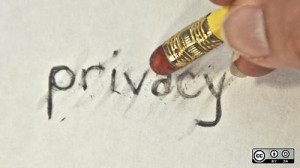 What is personal and identifiable information? Names, addresses, email addresses, phone numbers, user names, passwords, marital status, credit and financial information, medical history, travel itineraries, photographs, Social Security Numbers, or any information in “personally identifiable form.”
What is personal and identifiable information? Names, addresses, email addresses, phone numbers, user names, passwords, marital status, credit and financial information, medical history, travel itineraries, photographs, Social Security Numbers, or any information in “personally identifiable form.”
What about web stats and analytics? Information about viewers in general, such as browser type, pages viewed, referring sites, history, and location— the sort of information collected by Goggle Analytics—is not considered personal and identifying. I suppose a very sophisticated geek could identify individuals from such data. For this reason, many suggest every website and blog have a privacy policy that at least covers web stats.
What goes into a privacy policy?
- Describe the kind of information collected, such as names, addresses, and credit-card numbers. Provide users a way to correct errors.
- Explain how the information will be used and shared. Do you share it with potential publishers, agents, publicists, or marketing companies? How do you maintain security?
- Include an opt-out option.
- If you will be collecting personal information about children under the age of 13, then you must comply with the Children’s Online Privacy Protection Act (COPPA).
Sample privacy policies are easy to find on the internet. You may use the one on my website as an example. Keep in mind, I collect little personal information; only enough to send newsletters. If you collect substantial personal information or collect credit card numbers, you need more elaborate policies. Do your homework to learn more.
Complying With COPPA
If you operate a commercial website, online service, or app directed toward children under 13 and collect personal information from those children, then you must comply with a long list of requirements under the Children’s Online Privacy Protection Act (COPPA). COPPA also applies if a blogger operates a general-audience website and has actual knowledge that the site is collecting, using, or disclosing personal information from children under 13.
For example, if you operate a website where children may share questions and discussions about your book; or upload photos and drawings using their real or user names, home towns, etc., then you must comply with COPPA.
COPPA rules are technical, constantly changing, and beyond the scope of this post. Educate yourself starting with the FTC website.
Even better, hire an expert to help set up your site, write your COPPA policy, and install parental verification systems. Search online for COPPA compliance experts, and you’ll find dozens of companies.
Stirring Up Controversy
The information above applies to non-controversial blogs only, meaning you are not exposing government corruption, challenging corporate powers, and the like. For those with controversial blogs, I applaud you. The world needs more like you. But your legal needs are more complicated and specific. You will need an experienced attorney on your team.
Bloggers, what other legal questions do you have?
 Sooner or later, you may need an attorney.
Sooner or later, you may need an attorney.
Perhaps your publishing business is expanding to the point where you are considering incorporating and bringing in investors. Maybe your collaboration agreement needs a legal touch. Or, the worst has happened and someone is suing you for infringement, defamation, or some other wrongful act.
Many people have an unfavorable view of attorneys, which is not entirely fair. Yes, some attorneys are bullies, but they would have been bullies no matter what their profession.
Most lawyers are bookish types who try to look after their clients. If you avoid the bullies, you’ll find attorneys are valuable members of your publishing team.
There are two general types of attorneys.
Business attorneys assist you on matters such as setting up your business, obtaining EINs and resale certificates, drafting licenses and agreements, reviewing manuscripts for potential legal issues, and providing preventive counseling. They rarely step into the courtroom. Like me, their goal is to keep their clients out of court. However, if litigation arises, a business attorney assists clients with the preliminary negotiations, and, if unsuccessful, helps find the right litigator.
Litigation attorneys are experts in the process of litigation, including handling court filings, taking depositions, and making court appearances. A litigator would defend you if you are served with a complaint alleging infringement, defamation, breach of contract, or violation of law. Or a litigator would help you assert claims against someone infringing on your work, defaming you, or breaching an agreement.
I advise against hiring a litigator for general business advice. Typically, their orientation is too confrontational.
How to Find the Right Attorney
Start by asking people you know for referrals, including local writing clubs or self-publishing organizations. Many communities have “lawyers for the arts” groups, which offer discounted or free services to artists. Contact public-interest groups , such as organizations promoting fair use or First Amendment rights. You could also contact your local bar association. They often have referral services.
Don’t be surprised if you speak to one attorney, who refers you to another attorney, who refers you to yet another attorney. These attorneys are trying to help you find the right person with the right experience and the bandwidth to take you on as a client. Don’t assume they are trying to get rid of you.
What to Look for in an Attorney
Experience, especially in litigation. Nothing is more valuable than an attorney who has handled similar matters for a significant period—ten years at least. An experienced attorney will have a higher hourly rate, but will be able to assess and advise quickly. You are more likely to achieve a better result faster and cheaper.
Responsiveness. This is difficult to measure in first impressions, but try to gauge how quickly the attorney will respond to calls and emails. Ask the attorney about response time.
Chemistry. You must be candid with your attorney, particularly about your mistakes. Are you comfortable talking to this person? Is the attorney a good listener, or dismissive, patronizing, or distracted? Avoid any lawyer who doesn’t let you finish your sentences.
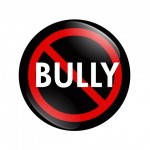 Style. Does the attorney seem creative and oriented toward problem-solving? Or a hard-charging bully? Trust me—don’t hire a bully. Even if you are really angry or scared, a bully wastes time and money. You will be better off with someone smart, who is fair but tough. Look for an iron fist in a velvet glove.
Style. Does the attorney seem creative and oriented toward problem-solving? Or a hard-charging bully? Trust me—don’t hire a bully. Even if you are really angry or scared, a bully wastes time and money. You will be better off with someone smart, who is fair but tough. Look for an iron fist in a velvet glove.
Warning signs. As I said, avoid bullies. Also avoid gladiators with something to prove to the world. (Not on your nickel, please.) Be wary of attorneys who brag too much about their own achievements or who assure you your case is a “slam dunk.” I am suspicious of any attorney who fails to warn clients that litigation is uncertain and expensive in terms of dollars, stress, and distractions. Avoid attorneys with too broad a range of practice areas; that’s often a sign of an attorney who will do anything to pay the rent. Check your state bar for any disciplinary actions against the attorney.
Up-front payment. It’s fair for the attorney to ask for a reasonable retainer, depending on the complexity of the matter. If the payment is high, consider two possibilities. First, the lawyer wants you to understand the expected cost of the matter. You may be gung-ho to sue your former writing partner. By asking for a $20,000 up-front payment or higher, the lawyer is making sure you understand the potential cost of revenge.
Alternatively, the lawyer may not want to handle the matter and hopes you will go away. Ask.
How to Manage Legal Fees
Organize your information, documents, and thoughts. Be prepared to present the problem, and not only your ideas of the solution. I find it difficult to understand a matter when a client calls me and tells me exactly what he wants me to do without explaining the background and reasons. Often, the proposed solution is off base, and it takes a while to back up the discussion to the underlying problem. If you do not know what information is relevant, err on the side of providing too much. It is faster for the attorney to skim through all the details in order to pick out what’s relevant than to identify what’s missing and have you fill in the gaps.
Schedule an initial consultation by phone or in person. Most lawyers will discuss a matter for 15 to 30 minutes without charge or for a flat fee.
Tell the attorney what other parties are involved or potentially involved. If the attorney has a conflict of interest, cut the conversation short.
Be honest. The attorney cannot help you unless all the facts are on the table, especially the embarrassing ones.
Ask for an estimate. The attorney should tell you hourly billing rates and whether a flat fee or contingency fee is possible. Discuss your budget. The attorney should let you know whether your budget is reasonable and workable.
Understand what risks you are willing to take. Your attorney could draft a 40-page airtight freelance agreement for your cover designer. But is that really appropriate for a $500 contract? Don’t pay for a ten-foot cement wall when a picket fence will do.
Engage an attorney with relevant experience. Even if the hourly rate is higher, the cost is likely to be less in the end. And an experienced lawyer will get you through your legal project quickly, so you can get back to writing your next book.
Comments Off on Publishing a Book to Promote Your Expertise and Business
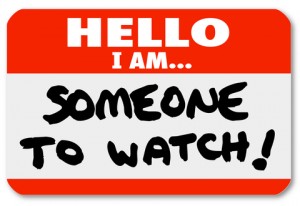 Want to be the author in authority? Want to create an instant credential? Want to be seen as the go-to person in your field?
Want to be the author in authority? Want to create an instant credential? Want to be seen as the go-to person in your field?
Then consider writing and self-publishing a book. Not just any book, but a book that shows off your expertise and provides valuable, useful information to your readers and potential customers/clients.
Typically, I speak to writers about legal issues. Last weekend, I spoke to lawyers about self-publishing a book as the ultimate content marketing tool. I wanted to share my notes with my readers.
Why Publish a Book?
- A book is a 6 x 9 business card that’s not thrown away.
- A book establishes the author as:
- An expert in the field
- An entrepreneur who understands business
- A communicator translating complex concepts into actionable items
- A problem solver instead of a prophet of doom
- A colleague willing to help
- A book opens doors to speaking engagements, articles, and interviews. Is a Ted Talk in your future?
- A book lets you pursue your passion. Attorneys have gone on to write best sellers and books that changed the world.
- Harper Lee
- John Grisham
- Scott Turow
- Sheldon Siegel
Why Publish Independently (Self-Publish)?
- It’s easier than you think. As the traditional publishing industry contracts, experienced ghostwriters, editors, designers, and marketers are going freelance. Book shepherds and consultants will help you find the right experts and manage the process for you.
- It’s cheaper than you think.For professional editing and design, and for the initial print run, budget between $5,000 to $10,000. That’s probably less than you spent on your business website.
- It’s flexible. With new print-on-demand technology, you can order small print runs as and when needed. You can revise your book at any time.
- It’s fast. Once a manuscript is written, traditional publishers take another twelve to eighteen months to release a book. In contrast, some self-publishing authors claim they can put out an ebook in a few days. Realistically, expect editing, design, proofing and initial production of a print book to take 90 to 180 days.
- It’s all within your control. You control the content, design, pricing, and distribution. A traditional legal publisher will price your book somewhere between $75 and $500 per copy, and they will send you only a handful of author copies. Publish your own book, and you set the price. You may change the price anytime you want. You may give away as many copies as you want.
How to Write a Helpful Business Book
Writing a bad book is worse that writing no book at all. I am not talking about grammar and syntax here. I am talking about a book that tries to cram in too much information.
 Most experts tend to look at problems this way. Connected, overlapping, full of exceptions and contradictions.
Most experts tend to look at problems this way. Connected, overlapping, full of exceptions and contradictions.
When you write a book, you have to take all that knowledge and turn it into something more like this:
 You have to Unknot Knowledge.
You have to Unknot Knowledge.
How do you do that?
First, identify your audience. Prospective customers and clients, existing customers and clients, the general public? Perhaps you are writing to support a cause or to raise money. Then you should focus on convincing donors, policy makers, and legislatures to back your project.
Second, identify the challenges facing your audience and how you can help solve them. Give relevant, practical information that helps readers understand and solve their own problems.
But wait, isn’t that why people pay you? Shouldn’t you be charging a gazillon dollars for this brain dump?
Yes, you will be giving away your knowledge, and in return you will be seen as smart, generous, problem-solving, and a member of the business team. All the ways you want to be seen to attract customers and clients.
How to Publish Independently
Four Stages:
- Content Development:
- Decide who is your audience
- Know your message
- Find your voice (approachable authority)
- Organize each chapter as problem/solution/checklist or recap.
- Consider graphics to convey information
- Editing and Design (Don’t skimp. Cheap looks cheap.)
- Developmental Editing
- Line editing
- Copy editing
- Site checking
- Indexing (Everyone LOVES an index.)
- Cover design/back cover copy and blurbs
- Interior design and layout
- Production
- POD and/or offset
- Ebook conversion into various formats
- Distribution and Marketing
- Amazon/CreateSpace
- Ingram, Baker & Taylor, local bookstores
- Ebook options
- Self-distribution
Do not assume readers will read the book from front to back. Your book will be a resource. Each chapter must stand on its own. Cross reference if you need to.
Information books work best as a conversation between you and your reader. Choose the right tone.
Don’t go on too long. Better to publishing ten 50-page, focused, problem-solving books, than one 500-page monster. Write something on a short-lived issue. Be the first one out of the gate.
Spend the time. If you can’t write it yourself, use a ghostwriter.
Keep your title simple.
Enjoy the process. We come from generation where authors and books are respected. You will feel proud to be among them.
Best of all, you’ll be all warmed up to write your novel.
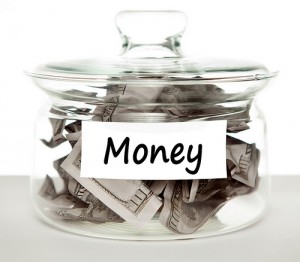 Self-publishing authors give away a lot of books. First, to family and friends, especially those you can nudge into writing a review. Then, to potential bloggers, reviewers, bookstores, and other contacts.
Self-publishing authors give away a lot of books. First, to family and friends, especially those you can nudge into writing a review. Then, to potential bloggers, reviewers, bookstores, and other contacts.
And writers sell their own books at readings, book fairs, and through their websites.
To make a reasonable profit, you need to pay as little as you can for a decently printed book.
When deciding which POD provider or self-publishing service company to use, be sure to calculate how much you will have to pay for author copies. You will be surprised how much the prices vary for the exact same book.
Some self-publishing companies make hefty profits by overcharging authors for the authors’ own books. I first learned about this in Mark Levine’s book, The Fine Print of Self-Publishing, an invaluable resource for any self-publisher.
Let’s check the prices for a 6 x 9 paperback, 250 pages, black and white interior with a color cover, matt finish, perfect binding. Nothing special. A typical, independently published book. According to Levine, the cost for POD printing of this hypothetical book is $0.015 per page plus $0.90 for a color cover, so $4.65 per copy. Levine owns Mill City Press, a self-publishing service company. On his website, he has posted some of his own calculations.
How much would it cost an author to buy 25 copies as of April 26, 2015? I am assuming no special sales, coupons, or offers. I am not including shipping and handling charges. Not all the websites had that information available.
CreateSpace $96
IngramSpark $105
Mill City Press $116
Outskirts Press $186
Dog Ear Press $207 (includes $2 per book handling fee)
BookBaby $268
IUniverse $259**
Gulp! A $200 spread between the lowest and the highest. For 25 copies! What if you were ordering 100 copies or 1000 copies?
**IUniverse, a Author Solutions company, has a particularly unfavorable way of calculating author prices. Their policy is to set the retail price fairly high ($15.95 and up for a 240-page book), then they charge the author a discount from the retail price. For 25 books, the discount is 35%.
This makes no sense to me. The cost of printing is the same. I don’t see why authors should pay more for their books because IUniverse sets an unrealistically high retail price. Could it be that IUniverse expects to make more money from selling books to authors than by selling books to the public?
As always, do your homework before you sign on with any POD or self-publishing company. You and your book deserve it.
What’s been your experience in buying author’s copies?
 My recent post on Joel Friedlander’s TheBookDesigner.com about getting permission to use lyrics has been a big hit. But a few writers have asked me for sources of public domain lyrics. I have a list below.
My recent post on Joel Friedlander’s TheBookDesigner.com about getting permission to use lyrics has been a big hit. But a few writers have asked me for sources of public domain lyrics. I have a list below.
But first, a little about public domain works in general.
Any work in the public domain is free to use without permission or compensation. You should, however, always give credit to the original creator out of respect and to avoid plagiarism. Plagiarism is not a legal claim; it’s more of a moral or professional standard.
The most common reason a copyrighted work falls into the public domain is the copyright has expired.
Any song first published or recorded in the United States before January 1, 1923 is in the public domain. This includes many rag time and early blues songs. Examples:
- Take Me Out To the Ball Game by Ed Meeker
- Swing Low Sweet Chariot
- Jelly Roll Blues by Jelly Roll Martin
Keep in mind, that only the sheet music and lyrics are in the public domain. Any recording of these songs after December 31, 1922 as well as any lyrics or arrangements added after that date might still be protected by copyright.
For music first published or recorded in the United States between 1923 and 1977, the copyright expiration depends on whether a copyright notice was properly placed, whether the copyright was registered, and whether the registration was renewed. You could track down, or hire someone to track down, whether the copyright was lost, but it may be simpler to assume your need permission.
I are covering only the U.S. in this e-book. If the lyrics you want to use were first published in another country, the laws of that other country will apply.
Where to find public domain song lyrics.
A number of websites list, collect and sometimes sell reprints of public domain songs. Some of these sites also include works that may still be subject to copyright, so be sure to check the copyright status of any work you intend to use. For U.S. works, only those first published or recorded before 1923 are within the public domain. Assume anything first published or recorded in 1923 or later is still protected by copyright.
Take a look at each site’s policies on copyright and reproduction before you download. Some require that you give them credit, and others request a reproduction fee.
The Public Domain Information Project provides a wealth of information about public domain music. They list thousands of public domain music titles, plus you can buy reprints for a small price. They also offer some “stock” music for licensing, again at reasonable prices.
The Lester S. Levy Sheet Music Collection at Johns Hopkins University’s Eisenhower Library has more than 29,000 pieces of American popular music. The collection spans 1780 to 1980 and documents nineteenth-century America through popular music, especially music spawned by military conflicts from the War of 1812 through World War I.
Historic American Sheet Music Project (1850-1920) . The David M. Rubenstein Rare Book & Manuscript Library at Duke University provides access to digital images of 3042 pieces published in the United States between 1850 and 1920. You may use their images for non-commercial purposes and must provide a citation. In other words, they claim a copyright in their image of the lyrics, not the lyrics themselves. If you want to use their images for commercial purposes, contact them for permission. The lyrics are still in the public domain.
Music for the Nation: American Sheet Music, 1870-1885, American Memories, The Library of Congress. The Library of Congress is an incredible resource for public domain lyrics, recordings, images and text.
African American Sheet Music (1850-1920), Brown University has one of the largest collections of sheet music in the United States, primarily vocal music of American imprints, from the 18th century to the present day, with the largest concentration of titles in the period 1840-1950. One of the most important categories consists of music by and relating to African Americans.
19th-Century American Sheet Music Digitization, The Nineteenth Century American Sheet Music Collection at the UNC-Chapel Hill Music Library includes approximately 3,500 popular vocal and instrumental titles from the 1830s to the end of the 19th century.
19th-Century California Sheet Music, University of California, Berkeley, has a virtual library of some 2,700 pieces of sheet music published in California between 1852 and 1900.
Loeb Music Library at Harvard University has a music index with over 30,000 titles from 1560 to 1830. The scores and libretti in this Virtual Collection include first and early editions and manuscript copies of music from the eighteenth and early nineteenth centuries by J.S. Bach and Bach family members, Mozart, Schubert and other composers, as well as multiple versions of nineteenth century opera scores, seminal works of musical modernism, and music of the Second Viennese School.
The International Music Score Library Project/Petrucci Music Library has a compilation of nearly 190,000 musical scores.
If you know of any other sites that compile and share public domain lyrics, please post the links in the Comments. Thank you.
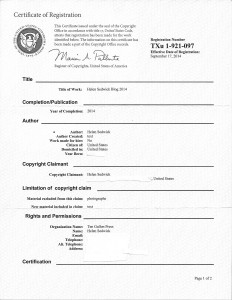 Voila! My Certificate of Registration for my blog content!
Voila! My Certificate of Registration for my blog content!
Some people say it can’t be done—registering the copyright in a blog. It can, if you understand the quirks of the US Copyright Office.
I explained those quirks in September 2014 when Nina Amir asked me to write a post about protecting website and blog content. See, How to Protect Your Blog Content.
In that post, I explained that there are a few tricks to registering web content. Without knowing these tricks, you are likely to run into a bureaucratic brick wall.
First, a little refresher about copyright. You do not need to register a copyright for it to be valid. You can send a DMCA takedown notice without registering your work. But registration gives you additional legal remedies in the event your work is infringed. For more about copyrights, see my post 11 Things Every Writer Should Know About Copyright.
Trick 1: The Copyright Office Considers Web Content to be Unpublished.
This surprised me. I spent a good 45 minutes discussing it with a senior registration specialist at the Copyright Office. But as of late 2014, the Copyright Office was still using a definition of “published” that dates back to the disco era, the 1980s. To them, “published” means the distribution of tangible material, typically printed.
Obviously, this is confusing to those of us living in the 21st Century. After all, nothing is more widely distributed than web content. When you upload posts through WordPress or Blogger, you click Publish. But as far as the Copyright Office is concerned, web content is a display, not a publication.
 This position does not hurt you. Unpublished works get the same protection as published work. Same legal rights, same legal remedies.
This position does not hurt you. Unpublished works get the same protection as published work. Same legal rights, same legal remedies.
Trick 2: Register Your Posts as a Collection of Unpublished Works as a Single Claim
Here’s the benefit of calling your web content unpublished: you may register multiple blog posts under one application (and one fee) as a “collection of unpublished work.” If you tried to register blog posts as published work, you would have to submit a separate application and fee for each post because an application may cover work published in a single day only.
I recommend you register your blog posts at the end of each year, so that all the materials in the application are created in the same year. Some lawyers recommend writers register blog posts every three months, so all posts are registered within three months following their release. That way, if a judge disagrees with the Copyright Office and decides that blogs posts are published, writers get the benefits of prompt registration. The choice is up to you; registering posts every three months is more time and money for more protection, at least theoretically.
On Nina Amir’s blog, I walked through the application form in detail.
On the day you submit the online application, go to your online blog and print out all the blog posts you are registering. Yes, that may be fifty or a hundred pages. If that is too voluminous, click on Deposit Copy Requirements for alternatives.
Your printed pages must show a date no later than the date of your application. If they show a later date, the Copyright Office may reject your application.
Mail the printed copy of your blog posts with the Shipping Slip to the address on the Shipping Slip. Since it may be 7 to 10 months before you hear from the Copyright Office, you might want to send the copy registered mail, return receipt requested. I have had a deposit lost by the copyright office, so I recommend you retain some evidence of shipping the deposit.
I expect someday the Copyright Office will recognize their definition of published is outdated and confusing, but until then, this process should work for registering your blog posts and website content.
Remember that none of these measures stop theft. There will always be people looking for get something for nothing. But registering your web content will give you additional leverage for stopping infringement and the opportunity to recover monetary damages when it happens.
 The ACX matchmaking process works well. Authors post their books on ACX and producers upload auditions. The author chooses a producer from the auditions, and the author and producer work together to create a final version of the audio book and upload it.
The ACX matchmaking process works well. Authors post their books on ACX and producers upload auditions. The author chooses a producer from the auditions, and the author and producer work together to create a final version of the audio book and upload it.



















